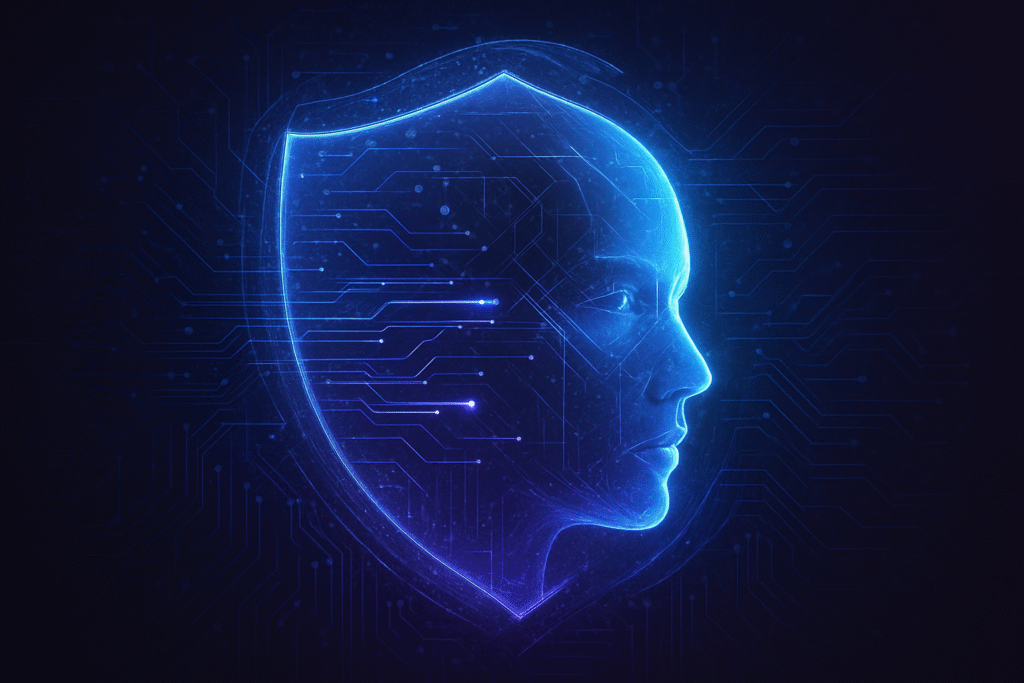
SAN BRUNO, CA – October 22, 2025 – In a landmark move poised to redefine online content safety, YouTube (NASDAQ: GOOGL) has officially launched its advanced AI-powered likeness detection system. Announced yesterday, October 21, 2025, this innovative tool empowers creators to identify and request the removal of AI-generated videos that illicitly use their face or voice. This initiative marks a significant expansion of YouTube's AI safety features, directly addressing the escalating global concerns surrounding deepfakes, impersonations, and the broader misuse of artificial intelligence in digital media.
The system represents a proactive stride in the ongoing battle against synthetic media, offering creators a critical line of defense for their digital identities and reputations. By providing a direct mechanism to monitor and control how their likeness is used, YouTube is setting a new standard for platform responsibility and creator protection in the age of generative AI. This development underscores the urgent need for robust technological solutions to safeguard authenticity and trust in the rapidly evolving online landscape.
Technical Prowess: How YouTube's AI Safeguards Digital Identity
At its core, YouTube's likeness detection system is a sophisticated blend of advanced machine learning algorithms and established content moderation infrastructure. This AI advancement is designed to meticulously analyze video content for subtle, often imperceptible, markers that betray AI generation or manipulation of a creator's visual and auditory identity.
The system's technical capabilities hinge on two primary mechanisms: face embeddings and numerical representations of voice. For visual likeness, verified creators provide a reference scan, including a government-issued photo ID and a short selfie video. From this, the AI generates unique "face embeddings"—numerical representations that act as a digital fingerprint of the creator's facial features. Similarly, for voice, the system leverages synthetic-singing identification technology, akin to its Content ID, to create and compare numerical representations of voice patterns, identifying AI-generated speech or singing. These embeddings and representations allow YouTube's AI to cross-reference newly uploaded videos against the creator's verified likeness, flagging potential matches where their face or voice may have been synthetically generated or altered without consent.
This new system significantly differentiates itself from previous approaches and existing technology, primarily YouTube's long-standing Content ID system. While Content ID, launched in 2007, focuses on detecting copyrighted audio and video by matching digital fingerprints of submitted works, the likeness detection tool specifically targets an individual's personal identity—their face and voice—against AI-generated impersonations and deepfakes. It's a shift from safeguarding intellectual property to protecting digital identity, offering a proactive defense against a more insidious form of misuse enabled by generative AI, where a likeness can be synthesized without directly copying existing copyrighted material.
Initial reactions from the AI research community and industry experts have been largely positive, hailing YouTube's move as a pioneering step. Many commend the platform for taking a leading role among major social platforms in confronting the ethical challenges of generative AI. However, there is cautious optimism, with experts noting that the system is "still being tuned and refined," implying that it may not be entirely foolproof and could generate false positives. The ethical implications, particularly concerning data privacy and the storage of biometric information, are also a focal point of discussion, though YouTube emphasizes voluntary participation and time-limited data storage. The potential for bias in facial and voice recognition systems is another ongoing ethical challenge that YouTube has acknowledged and is actively working to mitigate.
Industry Ripple Effects: Reshaping the AI Landscape
YouTube's introduction of the likeness detection system is poised to send significant ripple effects across the AI industry, influencing tech giants, established AI companies, and emerging startups alike. This development signals a clear industry shift towards greater accountability, transparency, and ethical considerations in AI deployment.
Google (NASDAQ: GOOGL), as YouTube's parent company, solidifies its position as a frontrunner in responsible AI and creator protection. This strategic move enhances trust in Google's broader suite of AI tools and services, differentiating ethical AI applications from potentially harmful ones. Other tech giants, including Meta Platforms (NASDAQ: META), Microsoft (NASDAQ: MSFT), and OpenAI, will face increased pressure to implement comparable content moderation and AI detection efforts. Companies developing advanced generative AI tools, such as OpenAI's Sora, will need to integrate robust deepfake detection and ethical guidelines into their offerings to ensure platform compliance and responsible use.
The system also presents potential disruption to existing products and services. AI content generation services, particularly those used to create "AI slop"—mass-produced, low-quality AI content lacking human input or originality—may experience increased scrutiny and declining demand. Business models reliant on "faceless" AI channels or those that do not add substantial human editorial value are especially vulnerable to demonetization under YouTube's updated policies.
Conversely, this development creates significant market opportunities and strategic advantages for companies specializing in ensuring authenticity and ethical AI use. Companies poised to benefit include:
- Deepfake Detection Companies: Firms like Paravision, Datambit, Pindrop, DuckDuckGoose, Sensity AI, Sentinel, and Deepware Scanner will see heightened demand for their advanced solutions in facial deepfake detection, voice deepfake detection, and multimedia forensics from various platforms, enterprises, and governmental bodies.
- Content Moderation AI Solution Providers: Companies such as Cognizant Technology Solutions (NASDAQ: CTSH), Besedo Global Services AB, Netino by Concentrix, Teleperformance (EPA: TEP), Accenture (NYSE: ACN), and Hive Moderation will find expanded opportunities for their sophisticated systems that combine AI-driven automation with expert human oversight.
- AI Ethics and Governance Solution Providers: YouTube's emphasis on responsible AI elevates the importance of ethical AI. Companies like IBM (NYSE: IBM), Microsoft (NASDAQ: MSFT), Credo AI, Monitaur, FICO (NYSE: FICO), and Fairly AI will gain stronger market presence by offering frameworks, bias detection, explainability tools, and compliance solutions for ethical AI guidelines.
This strategic shift underscores the growing importance of ethical AI development, robust content moderation, and advanced deepfake detection capabilities, fundamentally altering market dynamics in favor of solutions that ensure the integrity, safety, and authenticity of digital media.
Broader Implications: Safeguarding Digital Identity in a Shifting Landscape
YouTube's likeness detection system fits squarely into the broader AI landscape as a critical response to the escalating threat of deepfakes and AI-generated impersonations. It signifies a pivotal trend where platforms are moving beyond traditional content moderation, which primarily focused on copyrighted media, to embrace identity-based protection. This initiative aligns with YouTube's comprehensive AI governance efforts, including support for legislative measures like the proposed "NO FAKES Act" in the U.S., which aims to provide legal recourse against deceptive AI replicas.
The impacts on creator rights are profound. Creators' faces and voices are integral to their personal brands and livelihoods, and unauthorized AI impersonations can severely damage reputations, mislead audiences, and violate legal rights. By providing a mechanism to monitor and control their digital likeness, YouTube empowers creators with proactive protection, rather than just reactive measures after harm has occurred. This fosters a more secure environment for creative expression and reinforces YouTube's commitment to its creator community.
The system also plays a crucial role in bolstering online trust and the fight against misinformation. The proliferation of deepfakes erodes trust, making it difficult for viewers to discern genuine from fabricated content. By safeguarding creator identities and ensuring audiences are not misled by false endorsements or manipulated information, YouTube aims to preserve its platform as a trusted space. This is a direct strike against a growing source of online deception, complementing YouTube's existing requirements for creators to label realistic AI-generated material.
However, the system is not without potential concerns. The requirement for creators to submit sensitive biometric data (government ID and selfie video) raises privacy and data security questions, despite YouTube's assurances of robust safeguards and limited data storage. There are also concerns about the system's accuracy and the potential for false positives, as it is "still being tuned and refined." This necessitates continued human oversight to distinguish between malicious deepfakes and legitimate uses like parody or fair use. Balancing these rights with creator protection remains a complex challenge.
This development draws comparisons to YouTube's Content ID system, but its focus on identity rather than media copyright represents a significant evolution. In the past, solely AI-driven content moderation has faced challenges, leading to over-censorship. YouTube's "human-in-the-loop" approach, where creators review flagged content, reflects lessons learned and the critical need for nuanced decision-making in complex cases. This system formally acknowledges and empowers individuals with a degree of control over their digital likenesses, granting a new form of digital ownership and setting a precedent for other platforms to follow, influencing how they address similar challenges with AI-generated content.
The Road Ahead: Evolving Defenses and Regulatory Frameworks
The future of YouTube's likeness detection system will be characterized by continuous evolution, driven by the relentless advancement of deepfake technology and an increasingly complex regulatory landscape. In the near term, the system, which is currently rolling out to eligible YouTube Partner Program members, is expected to be accessible to all monetized creators by January 2026. YouTube will also continue refining its synthetic-singing identification technology within Content ID.
Longer-term developments will focus on enhancing the system's accuracy and sophistication to detect more advanced deepfakes that seamlessly blend real and synthetic elements, mimic subtle mannerisms, or integrate complex backgrounds. There's an anticipated shift towards more proactive moderation, potentially blocking harmful AI-generated content before it goes live, and deeper integration of AI across all facets of content moderation, including on-device moderation for instant screening.
Potential applications and use cases on the horizon include further strengthening creator protection against impersonation and misinformation, enhancing intellectual property management for personal likeness and voice, and bolstering brand safety for advertisers. The system will also play an increasingly vital role in combating misinformation and disinformation on a broader societal scale.
However, significant challenges remain. The "arms race" against deepfakes is continuous, requiring constant technological upgrades as generation techniques become more sophisticated. Addressing false positives and ensuring contextual nuance—distinguishing malicious deepfakes from legitimate content like parodies—will remain a persistent challenge, necessitating a hybrid human-AI approach. Privacy concerns related to biometric data storage and security will also need continuous attention.
Experts predict that the interplay between evolving deepfake technology, regulatory changes, and AI safety features will define the future. Deepfakes have progressed dramatically, and their prevalence is expected to grow exponentially, underscoring the need for detection systems to continuously adapt. Lawmakers worldwide are pushing for regulatory measures, including mandatory AI labeling standards, as seen in the U.S. (e.g., "No Fakes Act") and Europe (EU AI Act). YouTube, along with other tech giants, is integrating AI safety features as a core component of its platform strategy, emphasizing "responsible AI innovation." The future will likely see increased human-AI collaboration in content moderation and cross-platform efforts to establish global standards for preserving authenticity in online media.
A New Era of Digital Identity Protection
YouTube's new likeness detection system stands as a monumental development in the history of AI, marking a significant step in the ongoing effort to balance technological innovation with ethical responsibility. It fundamentally shifts the paradigm of content moderation from purely copyright-centric to identity-centric, empowering creators with unprecedented control over their digital selves in an increasingly synthetic world.
The key takeaways are clear: YouTube is committed to protecting its creators, enhancing AI safety, and combating the pervasive threat of deepfakes and misinformation. By leveraging advanced AI to detect unauthorized use of faces and voices, the platform is reinforcing trust and authenticity, which are paramount for the health of the digital ecosystem. This move sets a powerful precedent for other platforms and the broader tech industry, signaling a collective responsibility to build robust guardrails around generative AI.
The long-term impact will likely be a more secure and trustworthy online environment for creators and consumers alike, fostering greater creator empowerment and evolving digital trust. However, the "arms race" against digital deception will continue, demanding continuous refinement of detection technologies, careful navigation of privacy implications, and ensuring equitable access for all creators.
In the coming weeks and months, we will be watching closely for the phased rollout's progress and the system's real-world accuracy, particularly its ability to differentiate between malicious deepfakes and legitimate uses. Creator feedback will be crucial for identifying areas for improvement, and any further developments in privacy practices or legislative efforts will significantly shape the landscape of AI-generated content. YouTube's likeness detection system is not just a new tool; it's a declaration of a new era for digital identity protection, and its evolution will be critical to the future of online content.
This content is intended for informational purposes only and represents analysis of current AI developments.
TokenRing AI delivers enterprise-grade solutions for multi-agent AI workflow orchestration, AI-powered development tools, and seamless remote collaboration platforms.
For more information, visit https://www.tokenring.ai/.





